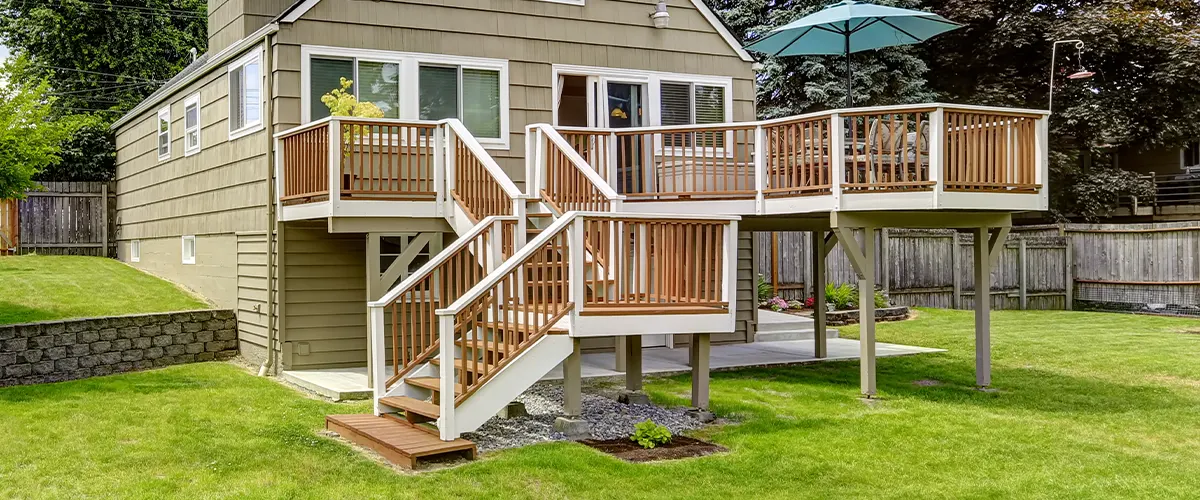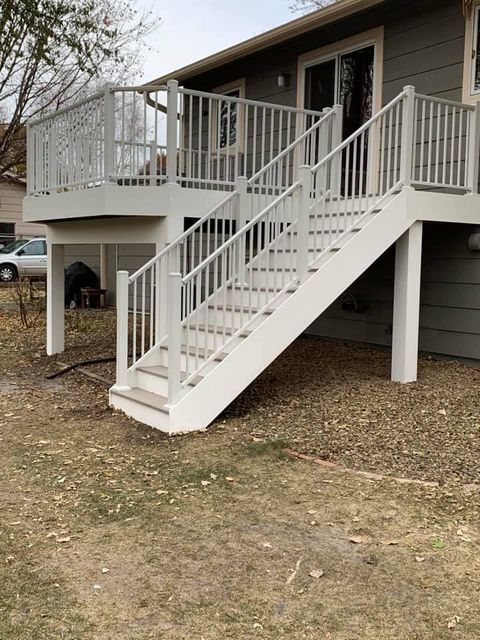Specialist Tips for Installing Deck Footings to Support Your Outdoor Space
When it pertains to building a deck, one of the most vital aspects to consider is the installment of proper footings. These footings are the foundation whereupon your outside space will certainly rest, supplying stability and support for several years to come. What exactly does it take to mount deck grounds properly? In this conversation, we will certainly explore professional suggestions and methods that can aid guarantee a successful and durable deck setup. From choosing the best kind of footings to avoiding typical mistakes, we will certainly provide you with the understanding and understandings you require to with confidence get started on your deck-building journey. So, let's dive right in and find the trick to a durable and solid exterior space.
Importance of Proper Deck Grounds
Correct deck footings are important for making certain the stability and long life of your exterior area. Without solid and effectively installed footings, your deck may come to be unpredictable, leading to safety dangers and expensive repair work.

Along with stability, appropriate deck grounds additionally add to the durability of your outside area (Deck Footings). Footings that are made and built to endure the components and soil problems in your area will help prevent the deck from settling or shifting gradually. By making certain the grounds are properly sized and installed, you can decrease the risk of damages to the deck framework, prolonging its life-span and reducing the demand for pricey repair work or replacements

Selecting the Right Sort Of Grounds
When selecting the ideal kind of footings for your deck, it is necessary to take into consideration aspects such as soil problems, neighborhood building ordinance, and the general design of your exterior space. The kind of footing you pick will certainly play an important duty in making certain the security and durability of your deck.
One typical kind of footing is the concrete footing. Concrete footings appropriate for many soil problems and give excellent support for decks. They are typically set up listed below the frost line to protect against changing and clearing up due to freezing and thawing cycles. One more alternative is helical piers, which are perfect for locations with unsteady soil or high water tables. These piers are screwed into the ground and offer strong support for the deck.
In many cases, you may require to utilize customized footings, such as stack footings or deep structures, if you are developing a big or multi-level deck. These footings are developed to distribute the weight of the deck over a bigger area, making certain security and avoiding clearing up or sinking.
Before picking a sort of footing, it is necessary to consult local building ordinance and policies to make certain conformity. In addition, take into consideration the style and intended usage of your exterior room. Elements such as the dimension, form, and load-bearing needs of your deck will affect the kind of footing that is most appropriate.
Preparing the Ground for Footing Setup
To correctly prepare the ground for footing setup, it is vital more information to examine the soil conditions and take required actions to make certain security and toughness of the deck. The primary step is to excavate the area where the footings will certainly be set up. The depth of the excavation will depend upon the frost line in your region and the details needs of the deck layout. It is important to eliminate any kind of plants, rocks, or debris from the excavation to guarantee a solid foundation.
When the location has been dug deep into, the next action is to compact the soil. This can be done utilizing a plate compactor or by using a hand tamper. Compacting the soil aids to eliminate any voids or air pockets, which can result in working out and instability gradually.
After compacting the soil, it is very important to lay a layer of crushed rock or smashed stone at the end of the excavation. This will certainly give water drainage and help to stop water from pooling around the grounds, which can bring about erosion and instability.
Step-by-Step Overview to Setting Up Deck Footings
After effectively preparing the ground for footing installment, the following step is to start the procedure anonymous of setting up deck footings. This step-by-step overview will certainly provide you with a clear understanding of how to set up deck grounds for your outdoor space.
Determine the area: Beginning by noting the placements of the deck grounds utilizing stakes and string. Make sure that the places line up with the layout and design of your deck.
Dig the holes: Use a blog post opening miner or an auger to dig the openings for the grounds. The depth and size of the openings must be in accordance with local building codes and the specific demands of your deck layout.
Level the openings: Use a level to guarantee that the holes are dug to the proper depth and are level with each other. (Deck Footings)
Include crushed rock: Area a layer of gravel at the base of each opening to boost drain and avoid the timber from decomposing.
Place the footings: Position the grounds right into the holes, making sure they are level and plumb. Utilize a degree and a determining tape to guarantee accuracy.
Protect the grounds: Pour concrete into the holes around the footings, loading them to the top. Use a message degree to guarantee the grounds continue to be level as the concrete collections.
Allow time for treating: Let the concrete remedy according to the supplier's instructions before proceeding with the deck construction.
Typical Blunders to Avoid During Footing Installment
One important element to think about during the installation of deck footings is avoiding typical blunders that can compromise the security and long life of your check that exterior area. While deck grounds may seem like a uncomplicated and straightforward part of the building and construction process, forgeting specific factors can bring about costly repair services and potential safety and security hazards down the line.

In addition, overlooking to mount appropriate water drainage measures can cause water to accumulate around the grounds, leading to rot, degeneration, and the eventual weakening of the deck's structure. Making use of the incorrect type of footing material or failing to properly secure the grounds can jeopardize their structural honesty.
To avoid these blunders, it is necessary to seek advice from with a professional or adhere to market standards to ensure correct ground setup. By doing so, you can make certain the stability and long life of your outdoor room, giving a pleasurable and secure environment for years ahead.
Conclusion
In verdict, installing proper deck grounds is critical for the security and durability of your outdoor space. By picking the appropriate kind of footings and adequately preparing the ground, you can guarantee a strong structure for your deck. Complying with a step-by-step guide and avoiding typical errors throughout footing installation will certainly additionally boost the resilience and safety and security of your deck.
Correct deck footings are essential for guaranteeing the security and durability of your outside room. The grounds serve as a link in between the deck and the ground, permitting the weight of the deck and its owners to be distributed evenly into the dirt.One typical type of footing is the concrete ground. Place the footings: Place the footings into the holes, making certain they are degree and plumb. Safeguard the footings: Put concrete into the holes around the grounds, filling them to the top.